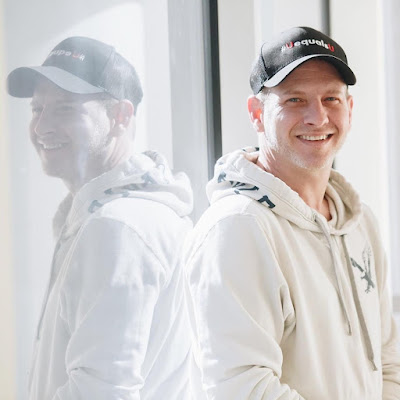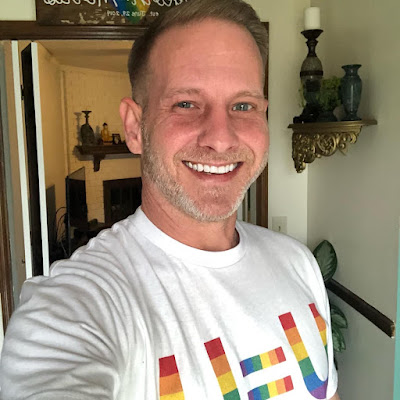By: Ranier Simons, ADAP Blog Guest Contributor
Since the beginning of the HIV/AIDS epidemic forty-two years ago, medical advancements in HIV prevention and treatment have come a long way. As a result, there is a growing population of older people living with HIV (OPWH). In 2020, about half of all people in the United States living with HIV were age 50 or older. It is estimated that by 2030, that percentage will be over seventy percent.[1] Aging for the general population is challenging. However, emerging evidence indicates specific challenges unique to aging people living with HIV. OPWH are dealing with health care system issues, specific medical challenges, social determinants of health hurdles, and even social stigma.
 |
| Photo Source: IDSE.net |
Isolation and loneliness are pervasive challenges OPWH reportedly face.[2,3] Many have survived the early years of the HIV/AIDS pandemic. As such, they have seen many of their friends and relatives die from the disease. Living in isolation, among many things, means not having anyone to call on in case of emergency, having no one to care for them when they become ill, and not having any outlet for social interaction. Jim Clay, program lead with Cascade AIDS Project in Portland, Oregon, created several social groups for OPWH under the umbrella of a program called Aging Well.[4] The groups enable OPWH with shared living experiences, such as those who are LGBTQ, to find a sense of community and support. Social integration and support lower the actual and perceived stigma that many OPWH experience.[3] Quality of life challenges regarding psychological well-being directly affect medical outcomes.
Regarding medical outcomes, OPWH are challenged with unique problems. HealthHIV highlighted some of these in their third annual State of Living with HIV National Survey.[1] To be considered for the survey, subjects had to be aged 50 or older or have been living with HIV for at least 15 years. Of those who qualified to be included, 93% were aged 50 or older, with one-third of those older than age 65. Most of the respondents living with HIV for 15 or more years were over the age of 50.
According to HealthHIV, polypharmacy was a medical issue reported by nearly all the included respondents. OPWH have higher rates of multiple comorbidities than the general population.[6] Polypharmacy means taking five or more medications to treat numerous non-HIV comorbidities and HIV. Multiple medications increase the chances of drug interactions with antiretrovirals or other drugs. The different simultaneous medications also cause wear on organs such as the liver and kidneys. Additionally, twenty-five percent of the respondents reported having current antiretroviral side effects, with the majority having had side effects on previous regimens.[1] Moreover, the survey also highlighted that OPWH are more likely to be diagnosed at later stages than younger people with HIV. Half of the respondents were. This is troubling because data shows OPWH have poorer CD4 cell recovery after initiating antiretroviral therapy.[5]
 |
| Photo Source: HealthHIV |
Evolving research is revealing specific medical challenges for women aging with HIV. Data shows that HIV can cause women to go into early menopause up to 5 years earlier than HIV-negative women.[7] This is due to HIV infection causing chronic infection, immunodeficiency, lower estrogen levels, and metabolic changes due to long-term medication use.[7] Early menopause increases the risk of osteoporosis. This is compounded by the fact that HIV is a known risk factor for osteoporosis.[7] Women with HIV are also three times as likely to have absent periods going into menopause.[7] Instead of gradually easing into menstrual changes, their periods stop abruptly. Women universally deal with the psychological and social stigma of aging. Older women living with HIV have their lived experiences negatively compounded by these medical challenges.
Predominantly, society associates aging with security and being established in life. Unfortunately, social determinants of health are challenging for many aging adults, especially OPWH. Housing, income, food insecurity, and transportation are just a few challenges reported by respondents of the HealthHIV survey. Affordable housing is a problem for OPWH on fixed incomes and those without much or any savings for retirement. One respondent explained that aging adults with HIV have to live where they can afford to.[1] That is the most basic tenet of survival, which influences everything else. Where one lives affects what kind of transportation they need, what sustenance they can afford, and even access to HIV care. If OPWH, out of necessity, have to live far away from their medical care, their medical outcomes are negatively affected. Not being able to access health services results in untimely doctor visits or complete omission, lack of medication adherence, and inadequate treatment of comorbidities. Sixty-eight percent of the respondents were concerned about the lack of permanent housing, and thirty percent worried about the condition of where they lived.[1]
Prevention of new HIV infections among the young and treatment of those under 50 is essential. However, OPWH are being left behind, and they feel it. It is vital to develop geriatric practices and policies to support OPWH. The aging HIV-positive population needs options for care that are more cooperative and convenient instead of fragmented. Their whole being needs to be addressed on a physical, mental, medical, and social service level. Most importantly, their humanity needs to be acknowledged and supported. OPWH are still sexual beings, and there are still cases of people over 50 newly acquiring HIV. Screening for HIV and other STDs/STIs in older adults must be integrated into all aging population care paradigms. The long-term effect of living with HIV is new territory. OPWH should not be left unsupported to deal with it alone.
[1] HealthHIV. (2023, May). State of Aging with HIV Third Annual National Survey. Retrieved from https://healthhiv.org/stateof/agingwithhiv/
[2] McCarty, A. (2023, July 18). 'Fought like hell to get here': Portland group helps long-term survivors of HIV 'age well' through connection and community. Retrieved from https://www.kgw.com/article/news/local/pride/portland-group-long-term-survivors-hiv/283-a110d2ca-af2c-4463-94dc-474c2db2dab3
[3] Petrullo, J. (2023, July 12). Older people with HIV face stigmas, struggles that require action. Retrieved from https://www.ajmc.com/view/older-people-with-hiv-face-stigmas-struggles-that-require-action
[4] Cascade AIDS Project. (2023). Aging Well: About Us. Retrieved from https://www.agingwellnw.org/about
[5] Means, A. R., Risher, K. A., Ujeneza, E. L., Maposa, I., Nondi, J., & Bellan, S. E. (2016). Impact of Age and Sex on CD4+ Cell Count Trajectories Following Treatment Initiation: An Analysis of the Tanzanian HIV Treatment Database. PLOS ONE, 11(10), e0164148. https://doi.org/10.1371/journal.pone.0164148
[6] Lerner, A. M., Eisinger, R. W., & Fauci, A. S. (2020). Comorbidities in Persons With HIV: The Lingering Challenge. JAMA, 323(1), 19–20. https://doi.org/10.1001/jama.2019.19775
[7] Mulcahy, L. (2023, July 27). Menopause may start earlier for aging women with HIV. Retrieved from https://www.webmd.com/hiv-aids/news/20230627/menopause-may-start-earlier-aging-women-hiv
Disclaimer: Guest blogs do not necessarily reflect the views of the ADAP Advocacy Association, but rather they provide a neutral platform whereby the author serves to promote open, honest discussion about public health-related issues and updates.










